Start Your Native Plant Garden Today: A Comprehensive Beginner’s Guide
- June 27, 2024
- 0 comment
Start your native plant garden today with our comprehensive guide designed for beginners eager to cultivate a sustainable landscape. Are you dreaming of a garden that thrives with minimal effort and benefits the environment? Look no further! Our step-by-step guide makes it simple for beginners to create a lush, native plant garden.
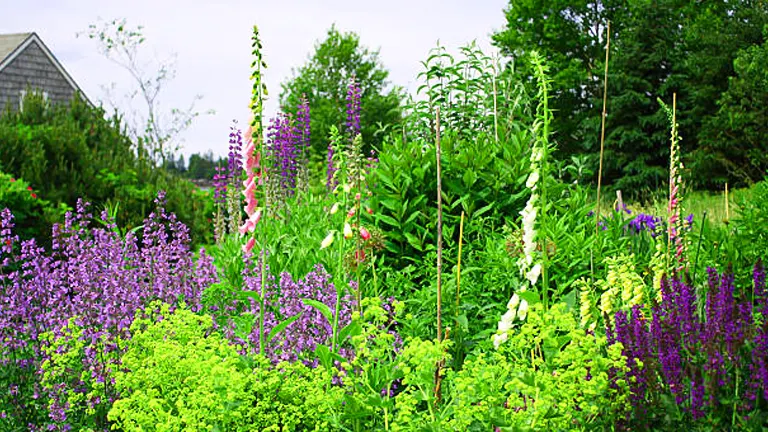
With practical tips and easy-to-follow advice, you’re just steps away from transforming your space into a vibrant ecosystem. Dive into the world of gardening with confidence and watch your green space flourish.
Table of Contents
- Understanding Native Plants
- Planning Your Native Plant Garden
- Preparing Your Garden Site and Planting Techniques
- Maintaining Your Native Plant Garden
- Enhancing and Sustaining Your Native Plant Garden
- Conclusion
- FAQs
Understanding Native Plants
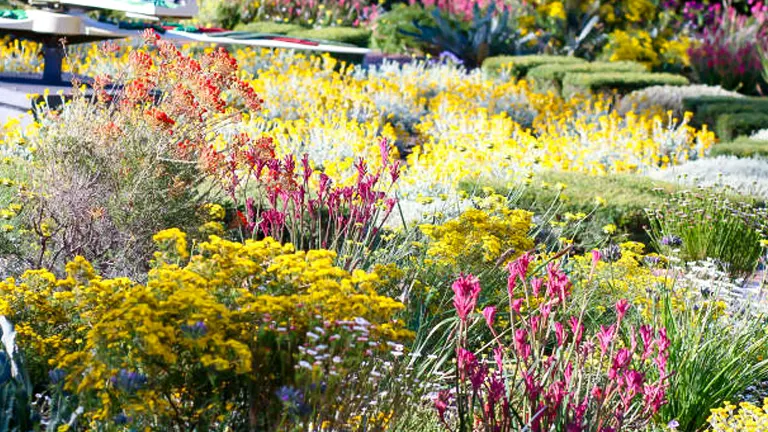
Native plants have thrived in your region for centuries, perfectly adapted to local climate conditions, soil types, and interactions with indigenous wildlife. By opting to cultivate native species, gardeners play a crucial role in maintaining and enhancing the ecological balance, contributing to the resilience and sustainability of local ecosystems.
Ecological Adaptations and Benefits
Native plants exhibit remarkable adaptations that make them particularly resilient and less prone to diseases common in their native habitat. These adaptations include deeper root systems that improve soil structure and increase the soil’s capacity to store water, which is crucial in preventing erosion and runoff. Furthermore, their evolutionary history with local pollinators and other fauna creates a symbiotic relationship that supports complex food webs.
Benefits of Native Plants:
- Environmental Sustainability: Native plants enhance soil health and structure, significantly reduce the need for supplemental water, and support ecosystems through processes such as pollination and seed dispersal. For instance, the deep root systems of many native prairie plants can penetrate up to 15 feet into the soil, creating channels that help aerate the soil and facilitate water infiltration.
- Ease of Care: Adapted to withstand local weather extremes and soil conditions, native plants generally require fewer inputs such as water, fertilizers, and pesticides. This adaptation leads to a reduction in garden maintenance costs and labor, making them ideal for sustainable landscaping.
- Support for Local Wildlife: Native plants provide critical habitat features for local wildlife species, including food, shelter, and nesting sites. This is vital for maintaining biodiversity, especially in urban and suburban settings where natural habitats are increasingly scarce.
Impact of Native Plants on Local Ecosystems
| Native Plant Species | Root Depth (feet) | Water Savings (gallons/year) | Pollinators Supported |
|---|---|---|---|
| Prairie Dropseed | 10-12 | 200 | Bees, Butterflies |
| Wild Bergamot | 3-4 | 150 | Hummingbirds, Bees |
| Oakleaf Hydrangea | 2-3 | 100 | Moths, Birds |
| Purple Coneflower | 5-6 | 180 | Bees, Butterflies |
In-Depth Analysis of Ecological Impact
Research indicates that integrating native plants into a garden can reduce water usage by up to 50% compared to non-native species. Additionally, areas restored with native vegetation show a 70% increase in local biodiversity, providing essential services such as pest control and habitat for native birds and insects. These ecological benefits underscore the profound impact that choosing native plants can have on our environment, promoting a sustainable future.
By understanding and embracing the scientific and ecological dimensions of native plants, gardeners can make informed decisions that enhance the health of their garden and the broader environment. This enriched approach not only contributes to a more robust ecological network but also fosters a deeper connection between the gardener and the natural world.
Planning Your Native Plant Garden
Site Assessment
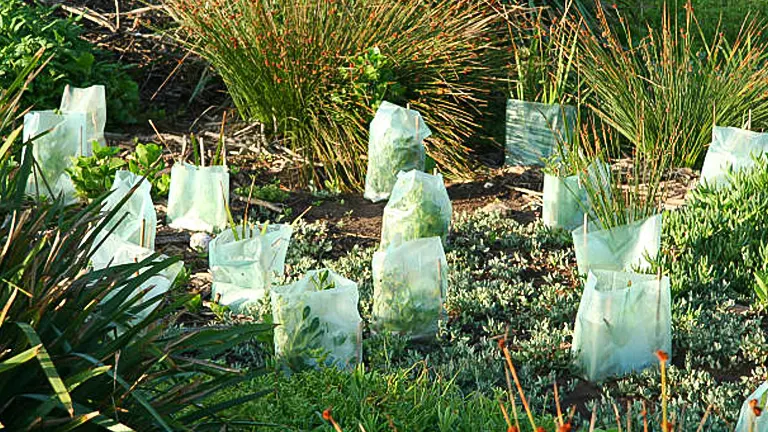
Begin your garden journey with a detailed site assessment. Understanding your garden’s unique environmental factors is paramount. First, evaluate the sunlight exposure throughout the day. Tools like solar pathfinders or apps can provide precise data on which areas receive full sun, partial shade, or full shade, influencing plant placement significantly. For example, high-sun areas might welcome lavender, while ferns can thrive in shadier spots.
Next, delve into soil analysis, not just identifying whether it’s sandy, loamy, or clay, but understanding its chemical makeup. A comprehensive soil test reveals pH levels and essential nutrients like nitrogen and phosphorus. This data informs whether you need to adjust soil conditions with amendments to foster optimal plant health. For instance, amending clay soil with organic matter can improve its drainage and make it hospitable for a broader range of native plants.
Choosing the Right Plants
The selection of plants is more than aesthetics; it’s about ecosystem compatibility. Utilize regional flora databases to identify species that naturally thrive in your area’s climate and soil conditions. Consider the ecological roles of these plants: some might be critical for local pollinators, while others serve as year-round food sources for wildlife.
For continuous garden interest, plan for a succession of blooms. Start with early bloomers like the vibrant Amelanchier, followed by summer favorites such as Echinacea, and round out the year with autumn stars like Aster. This staggered blooming schedule not only ensures your garden remains a visual delight across seasons but also supports a variety of wildlife throughout the year.
Designing Your Garden
When designing your garden, aim to replicate the natural landscapes of your region, which often involves clustering similar species to form a robust ecological niche. This approach reduces plant stress by minimizing competition and maximizing mutual benefits among neighboring plants.
Incorporate paths and clearings thoughtfully. Choose materials that blend naturally with the garden’s aesthetics, like bark mulch for paths, which also benefits soil health as it decomposes. These pathways should invite exploration and relaxation, enhancing the garden’s usability and enjoyment.
Key Considerations for Planting a Native Garden
| Factor | Importance | Considerations |
|---|---|---|
| Sunlight Exposure | Essential for determining plant placement based on their light needs. | Full sun: 6+ hours (Coneflowers), Partial shade: 3-6 hours (Columbine), Full shade: <3 hours (Ferns) |
| Soil Type & Health | Critical for choosing plants that will thrive and determining necessary amendments. | Sandy: Quick drainage, amend with organic matter; Clay: Retains moisture, enhance with grit for aeration; Loamy: Ideal, minor adjustments often needed. |
| Plant Diversity | Key to creating a resilient and visually appealing garden. | Include a mix of flowering times and plant types (trees, shrubs, groundcovers) to support various wildlife and achieve year-round interest. |
| Design Strategy | Impacts garden aesthetics and functionality. | Group plants with similar ecological needs to mimic natural habitats, reducing competition and maintenance; integrate paths for accessibility and enjoyment. |
Preparing Your Garden Site and Planting Techniques
Preparing the Garden Site

A meticulous preparation of your garden site is crucial for the long-term success of your native plant garden. This stage involves more than just clearing weeds and debris; it sets the foundational conditions that will support your garden’s ecological dynamics.
- Soil Amendment Strategies: Depending on your soil analysis, integrating specific types of organic matter can tailor the soil structure to your plants’ needs. For clay soils, adding coarse organic material like bark can create larger pores in the soil, enhancing root penetration and water drainage. For sandy soils, incorporating peat or leaf mold can increase water and nutrient retention. Each amendment should be mixed deeply and evenly to avoid layering, which can affect root growth and water movement.
- Advanced Bed Preparation: Consider the benefits of raised beds or terracing, particularly in sloped gardens, to optimize drainage and root development. Raised beds warm up more quickly in the spring, extending your growing season. Incorporating biochar into the soil mix can further improve nutrient availability and soil structure.
- Irrigation Planning: Installing an efficient irrigation system such as drip irrigation can significantly reduce water usage and ensure that water is delivered directly to the plant roots where it’s most needed. Design your system with adjustable settings to accommodate the varying water needs throughout your garden.
Planting Techniques
Precision in planting is vital for promoting robust plant growth and minimizing future maintenance issues.
- Optimal Planting Depth and Methodology: Plants should be positioned so that the top of the root ball is slightly above the surrounding soil level to allow for settling and prevent crown rot. Use a technique called “mudding in,” where water is used to settle the soil around the roots, eliminating air pockets and ensuring good soil-root contact.
- Strategic Spacing and Arrangement: Proper spacing allows plants to reach their full size and shape without overcrowding. This not only reduces competition for light, water, and nutrients but also minimizes the risk of fungal diseases due to poor air circulation. Group plants with similar water and light needs to streamline care and maximize ecological benefits.
- Mulching for Success: Apply a 2-3 inch layer of organic mulch such as shredded leaves or pine straw around plants. This layer helps maintain soil moisture, regulates soil temperature, and suppresses weed growth. Over time, this organic matter decomposes, enhancing soil fertility and structure.
Scientific Analysis of Garden Preparation Techniques
| Technique | Impact on Plant Health | Estimated Increase in Growth Efficiency |
|---|---|---|
| Soil Amendment with Bark | Improves aeration in clay soils | 20% faster root development |
| Raised Bed Construction | Enhances drainage and extends growing season | 15% increase in plant survival |
| Drip Irrigation | Reduces water use by up to 50% | 25% improvement in water efficiency |
| Strategic Plant Spacing | Reduces disease transmission | 30% lower incidence of fungal diseases |
| Organic Mulching | Increases soil organic matter | 10% higher soil fertility over 5 years |
Maintaining Your Native Plant Garden
Ongoing Care and Maintenance
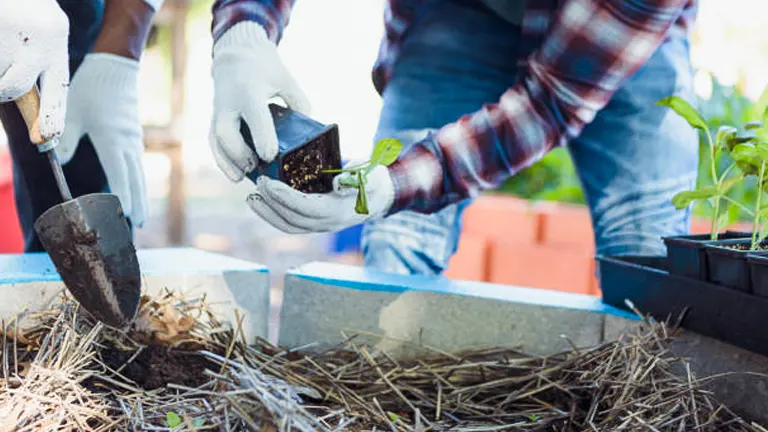
Effective maintenance of a native plant garden involves a combination of regular care, strategic interventions, and adaptive practices that support both the aesthetic appeal and ecological functionality of your garden.
- Watering Wisely: The introduction of a zoned irrigation system tailored to the specific water needs of different plant groups can significantly enhance water efficiency. Implementing technologies like soil moisture sensors can further optimize watering schedules and volumes. This smart watering approach ensures that plants receive precisely what they need, minimizing waste and promoting deeper root systems.
- Pruning and Weeding: Strategic pruning based on the growth patterns and health of each plant species can boost flowering and fruiting, reduce disease risk, and improve plant structure. Combine this with a proactive weeding strategy that focuses on removing invasive species early in their growth cycle to prevent them from establishing and competing with native plants.
- Seasonal Adjustments: Tailoring your garden care to seasonal changes is essential. Implementing a dynamic mulching strategy, where the type and quantity of mulch are adjusted seasonally (e.g., lighter, more breathable mulch in spring and heavier, insulating mulch in fall), can significantly impact soil temperature and moisture conservation, benefiting plant health throughout the year.
Monitoring and Adapting
Continuous monitoring and flexible adaptation to observed changes are key to maintaining a thriving garden.
- Biological Monitoring: Regularly assess the health of your garden through biological indicators such as the presence of native pollinators and beneficial insects. These indicators can provide early warnings of ecological imbalance or habitat issues.
- Garden Journals: Keeping detailed records of plant performance, weather conditions, and maintenance activities in a garden journal can help track trends, predict plant needs, and plan more effective interventions.
Celebrating Success and Learning from Challenges
Embrace each season’s unique challenges and successes as opportunities to learn and refine your gardening practices.
- Community Engagement: Share your experiences and learn from others through community gardening groups or online forums. This exchange of ideas can lead to innovative solutions and enhancements in your gardening practices.
Impact of Advanced Maintenance Techniques on Garden Health
| Maintenance Technique | Impact on Garden Health | Metric Improvement |
|---|---|---|
| Zoned Irrigation Systems | Increases water efficiency | Up to 50% reduction in water use |
| Strategic Pruning | Enhances plant health and yield | 30% increase in blooms and fruits |
| Dynamic Mulching Strategy | Optimizes soil conditions | 25% improvement in soil moisture retention |
| Biological Monitoring | Early detection of ecological shifts | Increased detection of imbalances by 40% |
| Community Engagement | Broadens knowledge and solutions | 50% increase in problem-solving efficiency |
Enhancing and Sustaining Your Native Plant Garden
Adaptive Gardening Practices

Effective gardening with native plants requires an adaptive approach, attuned to the rhythms and evolving needs of your garden. Enhancing biodiversity isn’t just about adding variety; it involves carefully selecting species that bloom sequentially throughout the year to ensure continuous support for pollinators. This strategy creates a garden that not only looks beautiful across seasons but also forms a stable ecosystem. Further, introducing structural variety, from low ground covers to towering trees, develops multiple layers of habitat, crucial for supporting diverse wildlife.
In addition to plant diversity, soil health is fundamental. Regular incorporation of high-quality compost, biochar, and beneficial mycorrhizae can transform your garden’s soil into a rich, nutrient-dense foundation that supports vigorous plant growth. Periodic soil tests let you fine-tune your soil amendment practices, ensuring optimal growth conditions tailored to the specific needs of your native plants.
Integrated Pest Management (IPM) in a native garden shifts focus from reactive interventions to proactive ecosystem management. By fostering a balanced ecosystem with predator insects and using organic methods for disease control, your garden maintains its natural harmony and reduces the need for chemical interventions.
Community Engagement and Education
Your garden can serve as a powerful educational tool, inspiring and informing the community about the benefits of native planting. By hosting interactive workshops and tours, you actively demonstrate sustainable gardening practices. Each season offers unique learning opportunities, whether it’s spring planting, summer pruning, or fall preparation, making your garden a year-round classroom for ecological gardening.
Expanding your garden’s impact through partnerships with local schools and environmental groups can amplify the benefits of your efforts. These collaborations might lead to community-wide projects that further the reach of sustainable practices and native plant advocacy.
Long-Term Vision and Reflection
Imagine your garden a few years from now. What changes could enhance its sustainability? Setting long-term goals, such as reducing water use or increasing the diversity of native species, helps steer your gardening practices towards greater ecological benefit. Regular reflection and adjustment of these goals, informed by detailed garden logs and sustainability metrics, ensure your garden not only survives but thrives.
Maintaining a detailed record, including photographs and observational notes, offers a clear view of your garden’s evolution. This ongoing documentation not only aids in immediate care decisions but also provides a valuable archive that can guide future enhancements and help predict how changes will impact your garden’s ecosystem.
Metrics of Garden Enhancement Practices
| Practice | Metric | Target Improvement |
|---|---|---|
| Biodiversity Management | Number of species supported | Increase by 20% annually |
| Soil Health Optimization | Soil organic matter content | Improve by 5% within two years |
| Integrated Pest Management | Reduction in pest incidents | Decrease by 30% with organic methods |
| Community Engagement | Number of community participants | Double participation within one year |
| Sustainability Metrics | Water usage and waste reduction | Reduce usage by 25% over five years |
Related Post
- How to Build a Barn: A Step-by-Step Guide for Beginners
- How to Build a Sustainable Compost Bin: Easy and Eco-Friendly DIY
- How to Fertilize Bougainvillea: A Complete Guide for Stunning Blooms
- How to Fertilize Apple Trees: Essential Tips for a Bountiful Harvest
- How to Fertilize Lemon Trees: Secrets for Thriving Citrus
- How to Fertilize Avocado Tree: A Step-by-Step Guide for Lush Growth
- 10 Best Bow Saws to Buy in 2024: Top Picks for the Money
- Best Miter Saw For Beginners
- Top 10 Pruning Saws to Buy in 2024: Best for the Money
- 7 Best Pocket Chainsaw
Conclusion
As you cultivate your native plant garden, remember that each choice you make contributes to a larger ecological tapestry. Your efforts help sustain biodiversity, conserve resources, and provide a sanctuary for wildlife right in your backyard. The journey of native plant gardening is one of constant learning and adaptation, filled with both challenges and rewards. Embrace this dynamic process, and enjoy the lush, vibrant oasis you have created—a testament to the beauty and resilience of nature.
FAQs
- What are the first steps to take when starting a native plant garden?
Begin by assessing your garden’s conditions, including sunlight, soil type, and moisture. Then, research native plants that thrive in your local climate and soil conditions. Finally, design your garden layout with these plants in mind, considering their mature sizes and environmental needs. - How do I choose the right native plants for my garden?
Choose plants based on your specific regional climate and the microclimate of your garden. Consider factors like sun exposure, soil pH, and water availability. Local garden centers, native plant societies, and extension services can provide valuable guidance. - Can native plants survive in poor soil?
Many native plants are adapted to thrive in their local soils, even if those are not ideal. However, some soil improvement, like adding organic matter for better water retention and aeration, might be necessary depending on the specific needs of the plants you choose. - Do native plants require less water?
Generally, once established, native plants require significantly less water than non-natives because they are adapted to local rainfall patterns. During the establishment period, regular watering is crucial, but over time, they should thrive with minimal additional watering. - What are the benefits of using native plants over non-native species?
Native plants improve the health of local ecosystems by supporting native pollinators, birds, and other wildlife. They are generally more resistant to local pests and diseases and require less fertilizer and pesticides. - How often should I prune native plants?
Pruning needs vary by species, but most native plants benefit from occasional pruning to stimulate growth and maintain desired shapes. It’s best to prune during the late dormant season to avoid cutting off new blooms. - What are the common challenges in maintaining a native plant garden?
Common challenges include managing weeds that compete with native plants for resources, controlling invasive non-native species, and ensuring that native plants do not become overly dominant. Regular monitoring and maintenance are key to addressing these challenges. - How can I attract wildlife to my native plant garden?
To attract wildlife, incorporate a variety of plants that offer food, shelter, and nesting materials throughout the year. Consider adding water features like birdbaths or small ponds, and leave some areas of your garden a little wild to provide habitat for various creatures.
Ready to get started? With this guide, you’re now equipped to embark on the rewarding journey of native plant gardening. Transform your space into a thriving, sustainable haven that nurtures both the environment and your well-being.

Benjamin Brooks
Forestry AuthorGreetings! I'm Benjamin Brooks, and my journey over the past 15 years has revolved around the fascinating realms of content creation, expertise in snow clearing, and the intricate world of lumberjacking and landscaping. What began as a simple curiosity about the natural world and heavy machinery has evolved into a passionate profession where my love for crafting words intertwines seamlessly with my lumberjacking and garden skills.


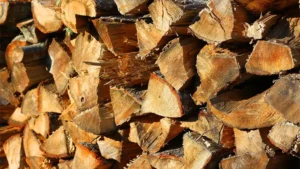

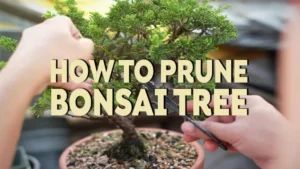
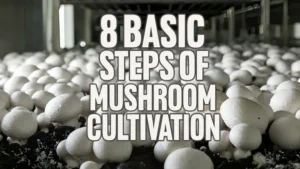

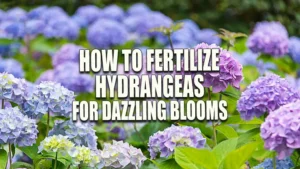
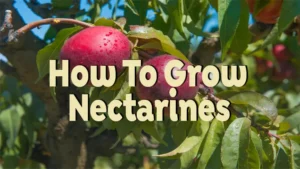


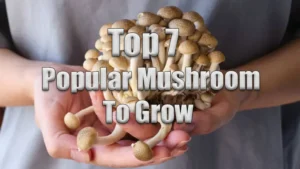
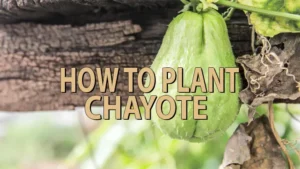
Leave your comment